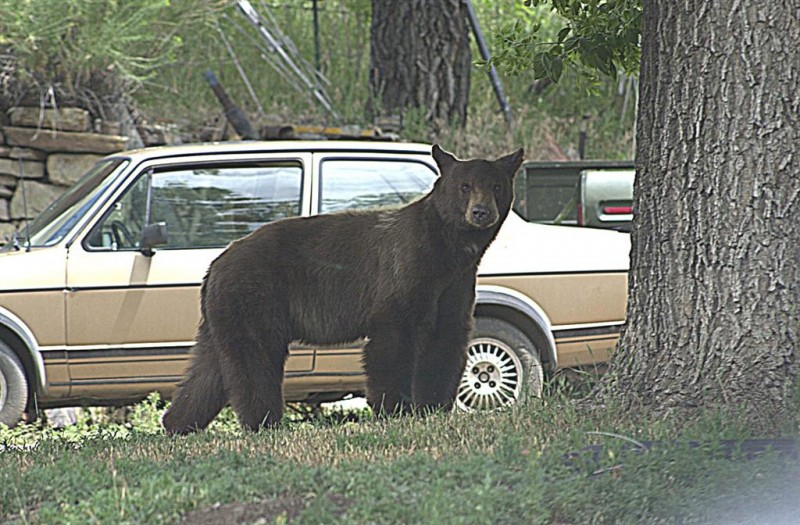
COLORADO SPRINGS, Colo. – The Colorado Division of Parks and Wildlife is asking residents and vacationers in southern Colorado to take extra care to avoid attracting hungry bears to homes, cabins, campgrounds and picnic areas.
Within the past few weeks, wildlife officers have responded to a higher than normal level of calls about bears entering homes, garages, sheds, tents, chicken coops and damaging beehives.
Wildlife officials killed a bear that injured a teenage camper in his tent July 15 near Leadville. The bear had apparently ransacked a cooler outside a tent in an adjacent area of the camp prior to the incident.
“This has been a below average year for natural food for bears,” explained Cory Chick, an area wildlife manager from Colorado Springs. “During the summer, bears depend on green, palatable vegetation and bugs and other critters they find under rocks and logs as their primary food sources. But those natural food sources are harder to find in dry conditions.”
Chick says natural food sources are out there, but some bears have slowed in searching for them because humans are making it too easy for bears to find unnatural food around homes.
With prime feeding time for bears just ahead, wildlife managers are concerned that the number of bear encounters could increase and are advising people to remove food attractants from their homes and campsites to avoid confrontations with bears.
When bears have to look harder to find natural forage, they gravitate toward any place they can find food — which brings them into closer proximity to people. When they find a food source, natural or not, bears will frequent the area until it is gone.
“During dry years like this, the bears have to look harder for food, and in doing so often end up finding what people leave out – garbage, bird feeders, barbecue grills and other human food,” said Chick.
“We are always going to have nuisance bears, but when bears are rewarded for foraging around houses and outbuildings, it increases the chances a nuisance bear becomes a dangerous bear,” Chick added.
“Our standard recommendations in normal years are for people to secure their trash, bring in bird feeders and pet food, and remove food attractants,” said district wildlife officer Aaron Flohrs. “This summer, we are asking people to be extra vigilant.”
Flohrs says that before people begin feeling sorry for the bears and take it upon themselves to feed them, they should know that feeding a bear is the absolute worst thing a person can do for it.
“There is always potential for human injury when bears come close to people,” Flohrs said. “But the risk factors go way up when the bears are ‘rewarded’ by people feeding them — or when bears get people food in any manner.”
Bears in Colorado evolved during periods of dry spells long before humans settled the state. “They will make it through this dry spell, too,” said Chick. “Right now we just want people to take the proper precautions to avoid anyone getting injured and keep bears out of trouble.”
The Division of Parks and Wildlife uses a decision tree to rate problem bears. Wildlife managers evaluate each conflict as to degree of urgency based on three categories. The first and lowest is a “nuisance” bear, second is a “depredating” bear, and the third level is a “dangerous” bear.
Most bear reports are classified at the nuisance level. This category includes bears that may pose a threat to property or may have already damaged property, but there is no immediate threat to humans. Action for bears at this level include a variety of deterrent methods, trying to educate the people on how to coexist with bears, and as a last resort trap and relocate the problem bear.
On the other hand, depredating and dangerous bears are dealt with in stronger methods and as soon as possible.
If weather conditions improve by mid to late August, the fall food supply of fruit and acorns should improve the situation. In the meantime, the best solution is to recognize that Colorado is bear country and to learn to live with the bruins as responsibly as we can, said Chick.
For more information on how to reduce the risk of bear conflicts in your neighborhood, please see: http://wildlife.state.co.us/WildlifeSpecies/LivingWithWildlife/Mammals/LivingWithBearsL1.htm

 Your Privacy Choices
Your Privacy Choices
 The
The